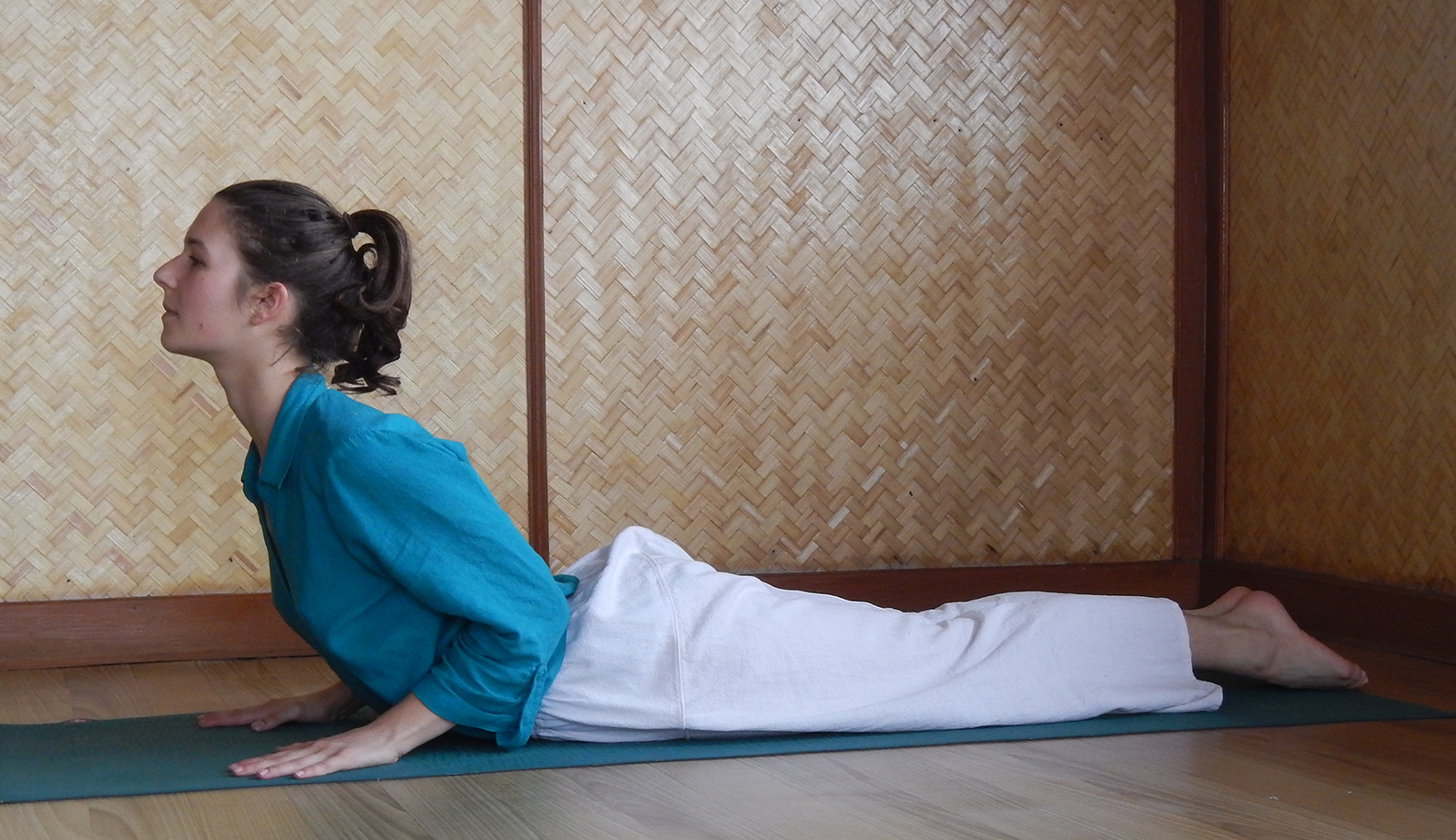The Cobra is the sixth posture. Bhujang means cobra in Sanskrit, as the complete posture resembles a cobra. It is the first backbend in the sequence, focusing on flexing the upper spine and strengthening the muscles of the lower back. Imagine the smooth movement of a snake as you stretch up, one vertebra at a time.
Benefits:
- Rejuvenates and brings blood supply to spinal nerves and muscles
- Relieves hunchback, back pain, lumbago, myalgia and kyphosis
- Expands rib cage and increases lung capacity, helping to relieve asthma
- Tones abdominal organs
- For women, tones ovaries and uterus, relieves menstrual problems and other reproductive system disorders
Instructions:
- Lay on the abdomen, feet together, forehead on the ground. Place the hands under the shoulders, fingertips aligned with the tops of the shoulders, elbows pressed against the body.
- Inhale, slide the head forward and up, pressing into the arms slightly. Keep the abdomen on the ground. Feel the arch in the upper back.
- Breathe comfortably. Keep pushing the chest forward and the head and shoulders back. Hold up to 1 minute.
- To release, exhale and slowly lower the chest and forehead down.
- Relax in Makarasana.
Tips:
- Keep feet together, this protects the lower back from arching.
- In this basic version of the cobra the abdomen should remain on the floor and the arms are not extended straight. The elbows are hugged into the sides of the body and the shoulders are relaxed away from the ears.
- Though you are tensing the lower back, the legs and buttocks should not have unnecessary extra tension.
- To make sure you are practicing the posture correctly, you may float the hands off the ground to understand which part of the upper back is being flexed. Then replace the hands on the ground for support.




